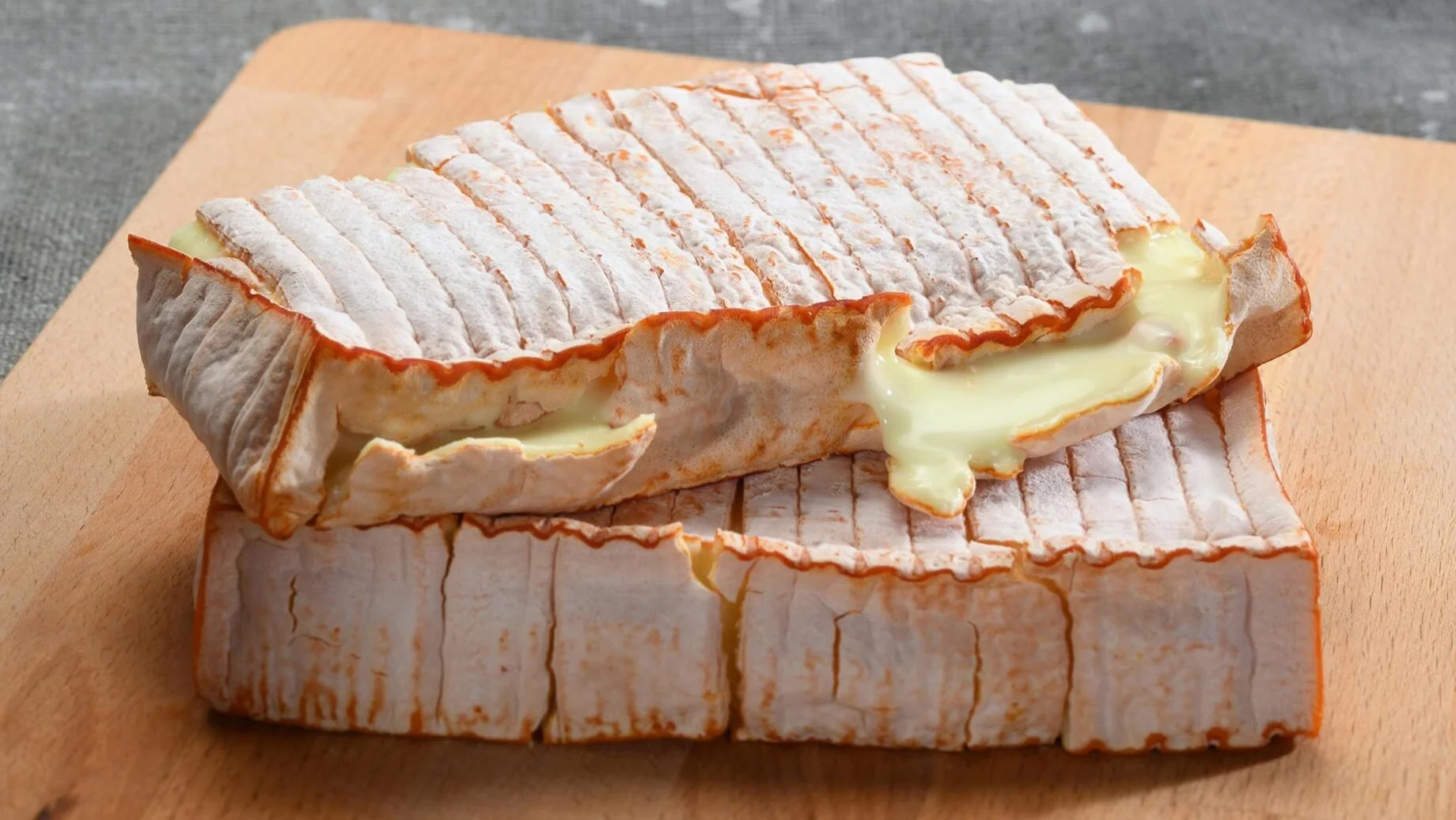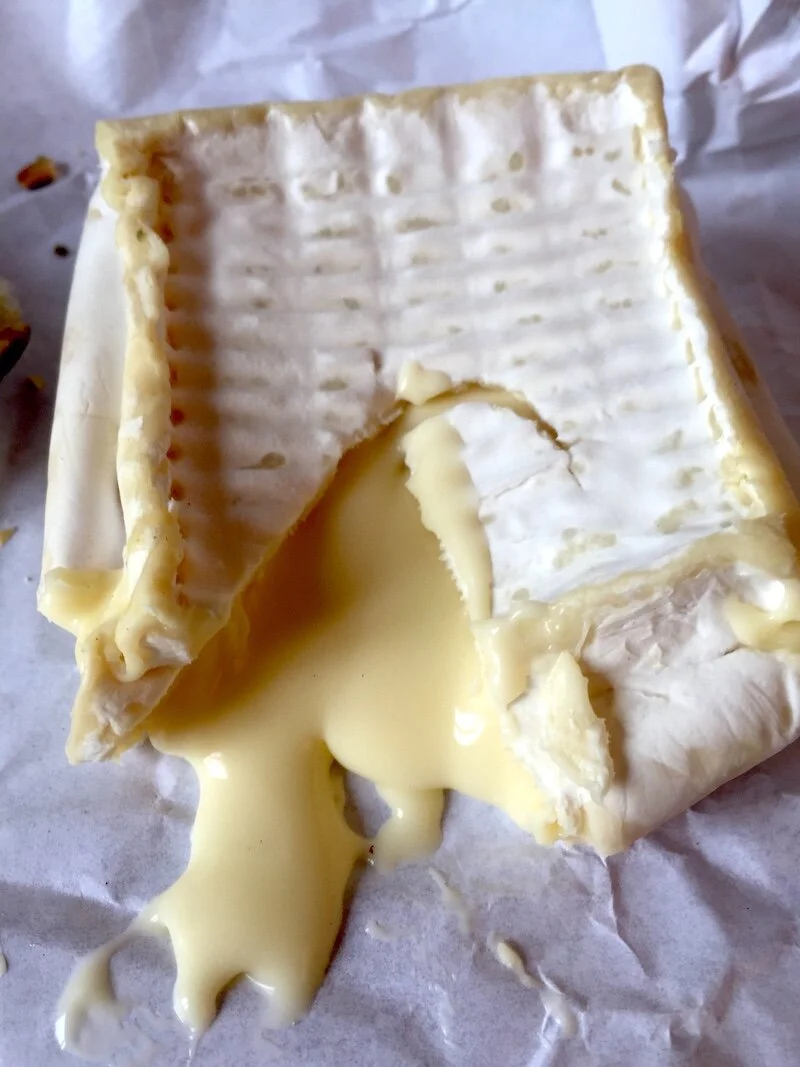Photo: cheesemonthclub.com
World Cheese Encyclopaedia - Each Sunday learn all about a new cheese.
This week Zamorano from Spain.
Photo: cheesewiki.com
Country: Spain 🇪🇸
Region: Castilla y León
Made from: Sheep’s milk
Pasteurised: No
Texture: Firm
Taste: Creamy, sweet, savory
Certification: DOP (Denominación de Origen Protegida)
Aging: 3 to 6 months
Zamorano (Spanish: Queso zamorano) is a sheep's milk cheese made in the province of Zamora, Kingdom of León, Spain. This is a hard cheese which is typically aged about 6 months. The cheeses are turned often and rubbed with olive oil, giving the cheese its characteristic dark color. This cheese owes its flavor character to the breed of sheep, the "small, scruffy" Churra and the Castilian sheep, predominant in the region, to the cold and humid climate conditions, and to its long aging in cellars.
Similar in many ways to the more famous Manchego, Zamorano was known as Manchego until the cheese was given its own recognized PDO (name protected) status. Named after Zamora, the principal city of its home region, the reason for the demarcation was to distinguish the differences between the two cheeses: Zamorano is made in the area around Castilla y León in the north-west of Spain, and must be produced using milk from the breeds of Churra and Castellana sheep, whereas Manchego comes from the Castile-La Mancha Region, southeast of Madrid and is made from the milk of Manchega sheep.
Zamorano has a "very creamy, sweet, savory flavor," with "a hint of piquancy." Others describe it as hardy and nutty. The shape is cylindrical with "a distinctive zigzag pattern," similar to Castellano or Manchego, which it resembles in taste also. The size is approximately 11 kg.
Zamorano is made seasonally from the end of the winter months through to the end of the summer. Cheeses are produced from raw milk and can be sold at several ages ranging from three months to one year.
The cheese production is carried out in compliance with the following steps, as mandated by the Regulating Council: 1. Curdling: caused by rennet (an enzyme-containing coagulant that produces the curd) at a temperature of 82 to 90°F. The curdling time is between 30 and 45 minutes. 2. Cutting and Heating: The resulting curd is cut several times and then stirred during a gentle warming-up process 3. Moulding and Pressing: Specific moulds give this cheese its characteristic cylindrical shape. 4. Salting: May be humid or dry, and at times both forms are used together. 5. Aging and Preservation/Curing: The minimum duration is no less than one hundred days, starting with the day of moulding. Some facilities still use the famed caves of the region that are distinctively cold and humid. Despite the large amount of cheese produced per year, the meticulous attention paid to the processing stages and methods ensures consistent flavor and quality.
Photo: cheesewiki.com
History
For over a century this region, located northwest of Madrid, has earned praise and enjoyed fame for its fantastic ewe’s milk cheeses. You’re probably already familiar with Manchego cheese, Spain’s best-known sheep’s milk cheese. However, Zamorano, another variety made much the same way, has likewise been adored by locals and the international community for more than 100 years. Made from the milk of the Castilian and Churra breeds of sheep native to this province, this pressed cheese has a distinctive, slightly piquant flavor, which is full-bodied and lingers on the palate. As with all cheese, the flavor of Zamorano comes from a unique combination of terrestrial elements, which ultimately influence both the milk of the animals from which it is made and the traditions of the people who create it. The continental climate of this region of Spain provides abundant pastures upon which the two breeds of sheep feed. In fact, there are some 60,000 animals registered at the Regulating Council, a body that governs various aspects of cheese production, including, as the name implies, strict regulation of the cheese-making process which has been protected by the Denomination of Origin since 1993. The sheep produce a hefty volume of milk annually; over four million gallons are used exclusively for cheese yielding over 330 tons of Zamorano cheese per year. This cheese was originally made and developed by essentially nomadic families who would move from place to place throughout the Castillian countryside, taking their flocks of sheep with them to each new grazing land. Wherever they would settle for the time being, they would unpack their cheese-making utensils and spend months making their goods. When they would finally return to their home province of Zamora, they would sell their cheese in local markets but not before leaving some to ripen for extended periods of time in underground cellars or caves. These aged cheeses were later sold at a higher price and/or consumed by the families that produced them. The season for producing their
Photo: Vinissimus
famed cheese was during the spring and summer months, during which they would make batch after batch that they would then sell or keep through the winter. In the later half of last century, they started settling and building small cheese factories which today are considered “artisan” cheese factories. They’re still worked by many of the same families who have made the cheese for centuries. They follow the same annual rhythm of producing and selling cheeses that their nomadic ancestors did, including curing these unique cheeses in the caves of the Zamoran province.
How to Enjoy It
Churra and Castellana sheep are renowned for giving rich milk that’s high in fat and protein. These characteristics translate into flavors of underlying sweetness balanced with a lactic acidity and rich, buttery milky notes. With age, especially after six months, these become more pronounced and distinctive from other pressed sheep’s milk cheeses and its possible to taste and smell notes of lanolin, butterscotch, sweet cooked butter and dried fruits and nuts. The texture of Zamorano is firm and liberally scattered with holes or “eyes” that are fairly uniform in size. The interior paste, while pale ivory colored in young cheeses, develops and changes with age, becoming darker and more straw-like.
Zamorano pairs beautifully with a good bottle of Tempranillo.
Sources: cheese.com, Wikipedia, culturecheesemag.com, cheesewiki.com, cheesemonthclub.com, Vinissimus
Looking for a different cheese? Search the whole cheese encyclopaedia here.





























